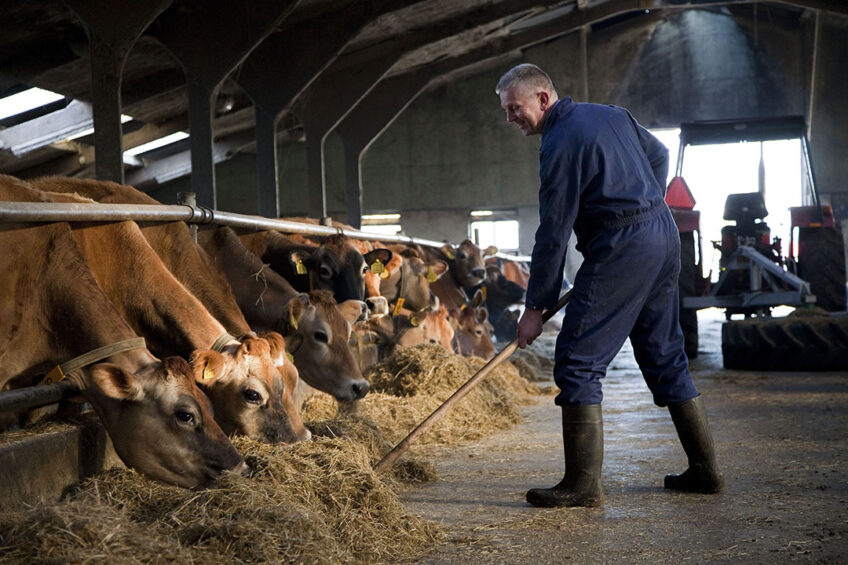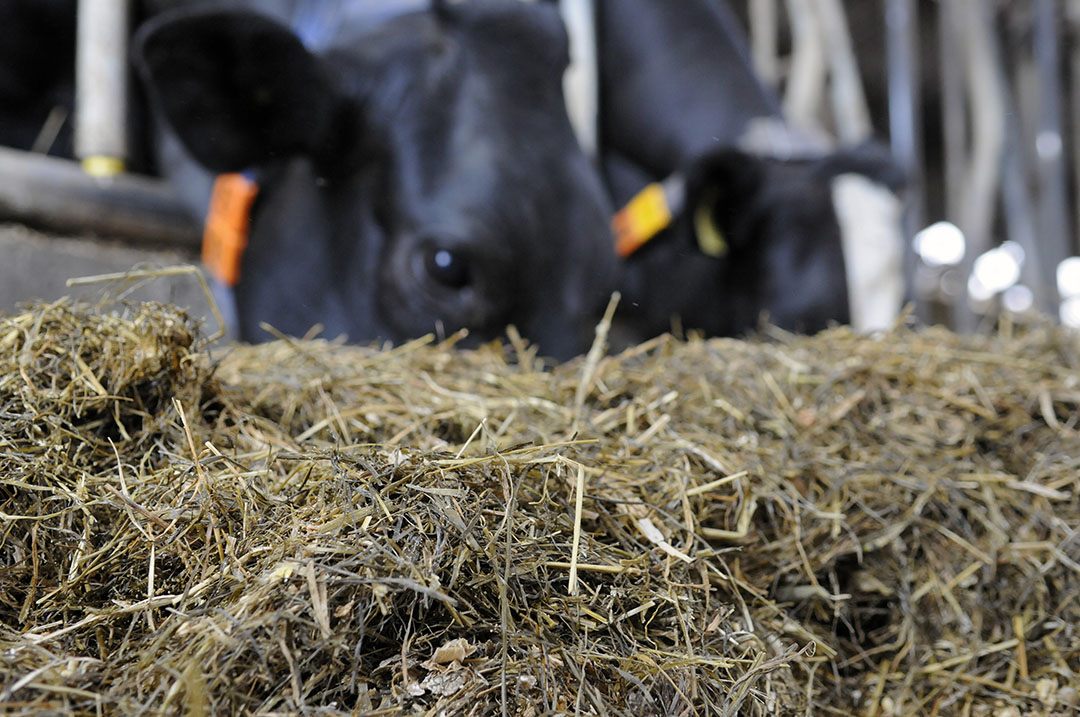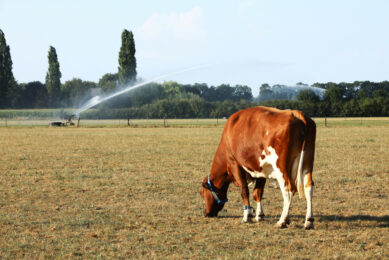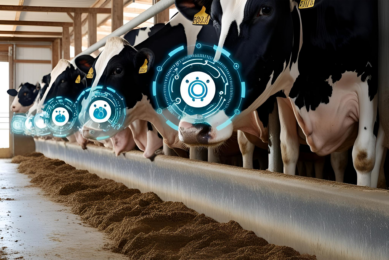Sustainability: The small dairy’s place

Dairy industry sustainability constantly transforms as it reworks its boundaries. Most discussion on the subject focuses on large operations, often asking them to carry the sustainability torch. But not every farm can afford a large-scale biodigester to produce biogas or fertiliser.
“Not so fast,” says Michel Wattiaux, Professor of Dairy Systems Management at the University of Wisconsin-Madison. “Biodigestion in the US has been cast as something the small, individual farmer can’t afford, unless they’re one of the concentrated animal feeding operations with more than 700 cows.”
The largest concentration of manure biodigesters in the world
Wattiaux describes how during a 2014 sabbatical to Costa Rica, a country congested with small dairies, he discovered that this well-educated, environmentally driven nation boasted the largest concentration of manure biodigesters in the world. Many farms had only 5 or 10 cows.
He admits it’s an extreme example, but asks, “Why do we exclude small producers from biodigestion in our economic system, and make it affordable only to large ones? The tech is actually quite simple. If Costa Rica can do it with 5 cows, why can’t a Wisconsin operation with 50 cows derive a renewable energy from their manure?”
Measurement factors
But Wattiaux explains that industry sustainability isn’t only about biodigesters, although greenhouse gas (GHG) emissions often dominate the conversation. If sustainability is narrowly viewed as GHGs emitted per kg of milk, he says it depends on how we make our calculations to reach zero or even a negative.
Early life-cycle analyses were completed by Dr Greg Thoma, Professor of Engineering at the University of Arkansas, and emissions were quantified, examining a limited number of operations. Totals were divided by kgs of milk in the first milk carbon footprint trials. Later research continued to study average American dairy farms and found large differences dependent on regions, size, location and nutrition.
“Limited progress finding a miracle feed”
“We never get away from the fact that methane is a major component,” he states. “Some potential exists and there’s been limited progress finding a miracle feed to take livestock-produced emissions down substantially.”
Wattiaux is a proponent of defining sustainability within a regional, national and watershed context, using a geographical location and varied scales of measurement to analyse a targeted region’s need. It’s difficult to compare a trade-off between a country supporting a saturated milk market to regions of Africa or South America where it’s not viable to ask farmers to cut production due to GHG emission levels.
“Many people need these foods for a healthy life,” he says. “Sustainability’s future will be driven by research scientists but also politicians and other stakeholders. They’ll understand the issue between economic growth, environmental concerns, the social dimension of animal welfare, and the consumer habits of wanting dairy products versus those who aren’t interested. All this needs to be considered when deciding what sustainability in a given part of the world should look like.”
Small producers stand proud
Wattiaux says small dairies have a role to play and, in some respects, even an upper hand over their larger counterparts.
Rebecca Larson of the Biological Systems Engineering Department at the University of Wisconsin-Madison recently published work demonstrating that manure storage contributes substantially to the milk carbon footprint, with unprocessed liquid storage a significant source of emissions.
“Small farms tend to have solid manure systems while larger ones generally employ liquid practices, which are proven to produce more emissions over time,” Wattiaux says. “Discussions with producers wanting to ‘modernise’ not ‘expand’ their facilities asked, ‘Will they be adopting technologies that are more common, but also more emitting, in large operations?’”
Adopting new technologies
The question then is how to help these farmers adopt new technologies associated with the least amount of emissions. He suggests that one way is to reduce the surface area of liquid pits. Instead of them being wide, long and shallow, we could envision narrower but deeper pits. He admits a negative aspect of this approach is increased energy requirements to pump the manure.
Another area where smaller dairies have the potential to outpace larger operations is with silage and forage processing. Wattiaux says in Wisconsin, as cow numbers have risen, herd size has grown quicker than land access abilities. A by-product of this swing is that more crops have shifted from pasture to alfalfa and finally to corn, in a quest for higher amounts of biomass per acre. Most smaller farms still rely more on alfalfa and, while he clarifies that the completed studies are not definitive, it appears alfalfa silage carries a slight advantage over corn silage in emissions.
Whether earned or not, small dairies also have an advantage in how consumers perceive their approach to animal welfare issues.
“The image of care on these dairies is perceived as more ideal,” he adds. “This may or may not be true but having small or medium-sized producers can still help sustainability with the perception of these farmers loving and taking care of their cows.”

Milk carbon footprint
Wattiaux explains that many experts climb on the bandwagon of reducing the milk carbon footprint by increasing milk production, but he believes this brings back the question of how the carbon footprint is defined regarding location, environment and economics.
“In the carbon footprint ratio, with the amount of gas as our numerator, and milk as our denominator, when we boost production, we’re increasing the denominator to reduce the ratio. Research history confirms the industry is much better at pushing efficiency and generating more milk in comparison to reducing emissions. We need to consider which factors are accounted for in how the carbon footprint is defined.”
Wattiaux stressed that the US needs to constantly rethink the concentration of the industry and envisions its success with large and small operations working in tandem. Projections currently show less than 5,000 dairies could supply the entire nation in coming decades, but he sees putting all the industry’s eggs in extremely large baskets as risky.
“It’s part of sustainability’s resilience to distribute the risk over greater numbers spread around different landscapes,” he says, “rather than having the most efficient operations gaining the lion’s share of the market access at everyone else’s expense.”
Encourage smaller producers, and consumers
He warns we need to find ways to encourage production from small and middle-sized farms around the world and help consumers understand they may pay a slightly higher price for their foods. This approach will provide decent livelihoods for farmers of all sizes of operations.
“When we look at poverty alleviation and responsible consumption and production, gender equality and even justice, dairy has so much to offer for sustainable development. Unfortunately, in the developed world, we’ve lost some of those connections because the sector has become so specialised. There are so few farmers left that 99% of the population doesn’t understand where milk comes from or how it’s produced.”
Join 13,000+ subscribers
Subscribe to our newsletter to stay updated about all the need-to-know content in the dairy sector, two times a week.










